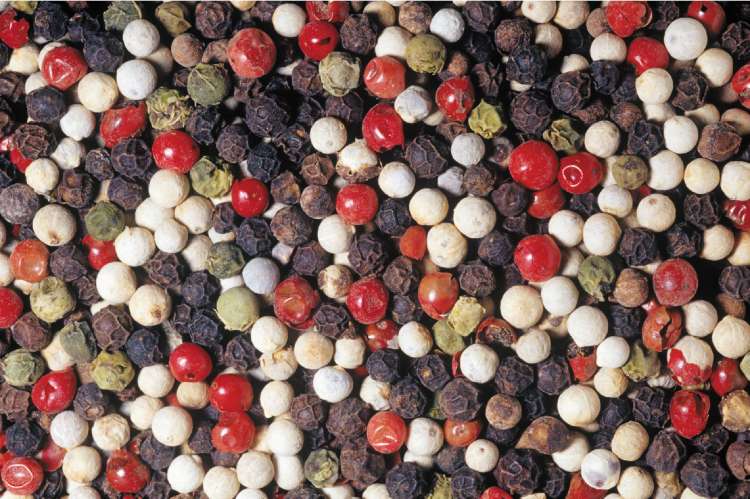Charles Campion: Real food
Hot stuff

There is one spice so ever-present that we tend to ignore its great contribution to cookery – if any spice deserves a "Lifetime Achievement Award" it is pepper. How sophisticated we all felt back in the dark days of the 1970's when the moustachioed Italian waiter approached our table with a three-foot-tall, polished-wood pepper mill - "Freshly ground black pepper, Sir?" Black pepper became the mainspring of fine dining and before long the ingredients list of every recipe in every book tailed off with an identical mantra – add salt to taste and freshly ground black pepper. At this point the style arbiters stepped in to decree that black pepper was chic and white pepper was common, something that would have puzzled chefs from earlier generations who knew perfectly well that white peppercorns were merely black peppercorns which have been allowed to ripen further and then had their skins rubbed off (which accounts for them being "hotter" – they are riper and so there's more of the hot stuff – a chemical called piperine). But gradually pepper has morphed from being a rare and exotic spice into a commodity.
The peppercorns on offer in every supermarket have been traded in bulk, providing they are clean and cheap no-one cares very much where they come from and the idea that different varieties of black peppercorns from different countries could taste radically different comes as a shock. At his Michelin starred restaurant Le Maison du Bricourt near St Malo, Olivier Roellinger sets great store by his spice workshop (he links his cuisine, and love of imported spices, back to Brittany's Corsair heritage). L'Epicerie Roellinger offers several different peppers including Telicherry and Wynad peppers from India, Black Sarawak from Indonesia and even a Black Vietnamese pepper. They all have distinctive flavours – the Telicherry is flowery and fruity; the Wynad can be resinous; the Sarawak is warm and pungent; and the Vietnamese pepper is sharp rather than hot. Such interesting options are slowly making the way onto our supermarket shelves – but for the ultimate pepper one-upmanship you cannot do better than "long pepper" – this comes from a different species of pepper vine and looks like a petrified catkin about 2cms long, it is sometimes available in ethnic shops.
Trying to use some long pepper purchased on a whim at the market in Trivandrum, Southern India proved very difficult – long pepper is mercilessly fiery and has an acrid pungent aftertaste – these are not easy flavours to work with.
Spice of life
Turn to Christine McFadden's rather good new book – "Pepper, the spice that changed the world". It treads in the footsteps of other major single ingredient books: "Cod" by Mark Kurlansky, and "Truffles" by Elizabeth Luard and like them looks like becoming a must-have reference book. McFadden's book is informative and an easy read – all the main varieties of pepper are dealt with and there are over 100 practical recipes – such as "peppered greens with lemon and coriander" and "white pepper shortbread". Pepper by Christine McFadden, is published by Absolute Press £25. You'll find Olivier Roellinger's website at www.maisons-de-bricourt.com
Join our commenting forum
Join thought-provoking conversations, follow other Independent readers and see their replies
Comments
Bookmark popover
Removed from bookmarks